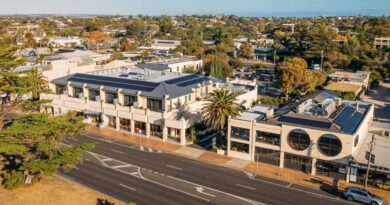Centro Biggest Australian Casualty of Global Credit Crunch
Yesterday, the group announced it had obtained an interim extension until 15 February 2008, allowing the group time to negotiate the refinancing of $A1.2 billion in maturing debt, which arose from the group’s exposure to the US sub-prime mortgage market.
The refinancing is widely tipped to include the sale of strongly performing Australian retail property assets, as well as American assets.
Centro also confirmed shareholders would not receive a December 2007 mid-year dividend, and revised down its forecast distributable income for the year to June 2008 from 47 cents to 40.6 cents.
Investors in Centro Property Group, the country’s second biggest owner of shopping centres, have now suffered an annual earning downgrade of 13.6 per cent, according to Property Investment Research director Mark Wist.
Share values in Centro’s much smaller $3.8 billion Centro Retail Trust fell from $1.42 at the start of the day, to 85 cents at the end of the day. It revised down its forecast distributable income for the year to June 2008 from 14.23 cents per security, to 13.50 cents.
Analysts and agents unanimously agree the sharp fall in security prices should not be the beginning of the end for the Centro Property Group, or the $100 billion Australian listed property trust sector, which through proactive refinancing, has largely avoided capital losses experienced in the US and United Kingdom commercial property markets.
However they expect Centro will face difficulties raising money from equity investors to cover its increased debt costs. This makes selling some of its assets to offset the losses and retaining the dividend, the sensible option for the group, Mr Wist says.
Ironically, Centro executives have been pushing aggressively into the United States retail market over the past twelve months, with US shopping centres now forming more than half the value of Centro Property Group’s assets.
The renegotiations of short-term facilities related to the $6 billion purchase earlier this year of the New Plan Excel Realty Trust in the US, and the Heritage fund, has been blamed for Centro’s exposure to the sub-prime mortgage crisis.
Overall, Centro is speculated to have around $18 billion in debt, and some $26.6 billion in shopping centre assets, giving it a leverage of about 68 per cent.
“While it’s not uncommon for US based trusts to have leverage of more than 50 per cent, when the price of debt goes up, it can become problematic because the trust is exposed if the debt maturity coincides with a lack of availability of debt funds,” said Mr Wist. “This would also affect the price of that debt.”
Centro’s biggest commercial property assets in Australia include The Glen Shopping Centre in Glen Waverley, Centro Bankstown in Sydney and the Galleria in Western Australia.
“Centro’s recent announcement will make it an attractive takeover target because it is trading well below Net Tangible Assets, although any such approaches would probably be a measure of last resort” Mr Wist said.
“Centro didn’t anticipate that the credit crunch would hit so tightly,” says Mr Wist who likens it to a couple borrowing too much to buy their first home.
Centro’s recent share market dip will shine the spotlight on trusts which have high levels of debt, Mr Wist says. Other trusts he brands “guilty by association” include the Rubicon America and Rubicon Europe funds which have debt gearings of a respective 75 per cent and 64 per cent.







